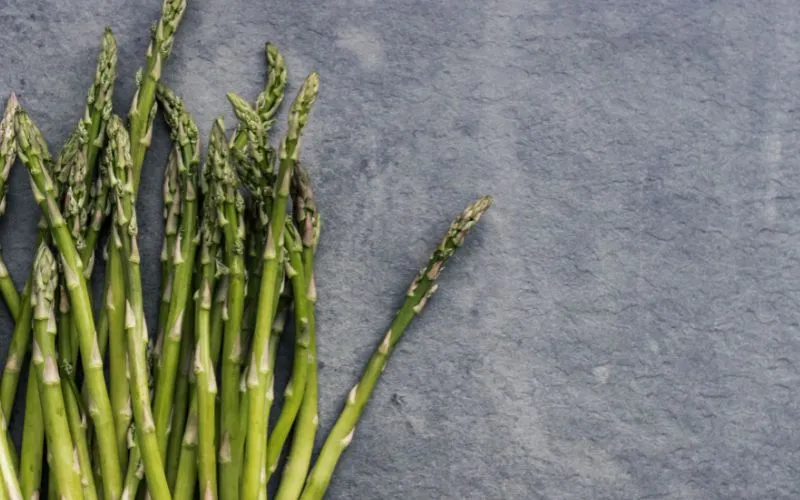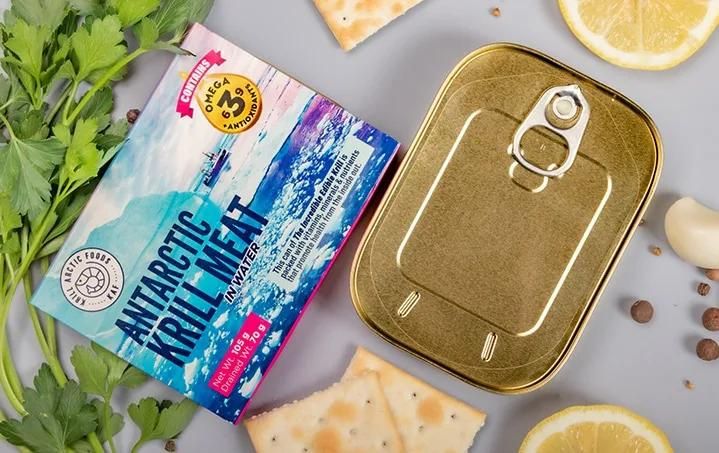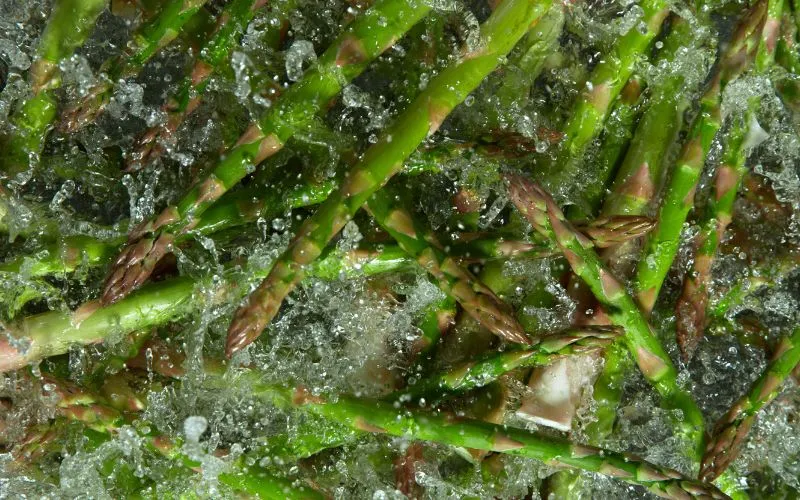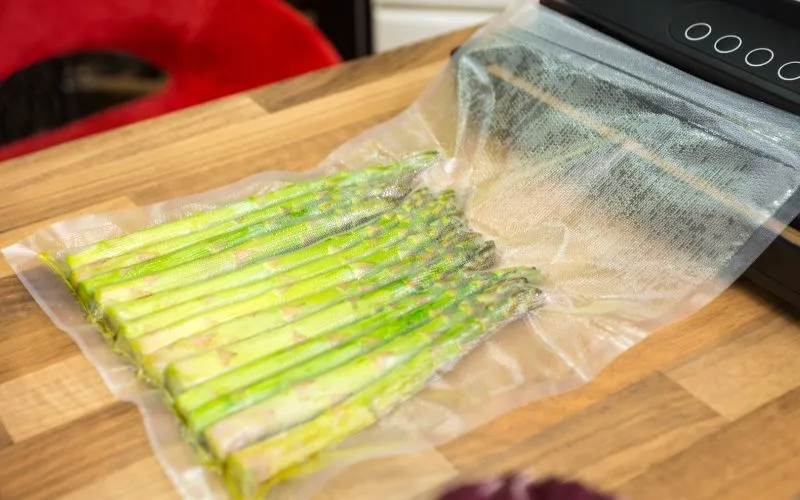If you’ve ever wondered how to preserve the vibrant, fresh taste of asparagus long after its peak season, freezing is your best bet. First, you’ll need to prepare your asparagus by washing and trimming the ends to ensure you’re only preserving the best parts. The key step to blanching is simple and essential for maintaining that bright green color and crisp texture.
You’ll only need a few minutes to get this right, and what follows will guarantee your asparagus stays as fresh as the day you bought it, even months later. Curious about the next steps in this process? Read the full article to get the answers to all your questions.
Benefits Of Asparagus
Nutrient-Rich: Asparagus is packed with essential nutrients, including vitamins A, C, E, K, and B6, as well as folate, iron, copper, calcium, protein, and fiber.
Antioxidant Properties: Asparagus is rich in antioxidants, much like krill meat, which has a high content of antioxidant properties such as vitamin E, vitamin C, and glutathione. These properties help fight free radicals and reduce oxidative stress.
Supports Digestive Health: Asparagus is high in dietary fiber and promotes healthy digestion and regular bowel movements. It also contains inulin, a prebiotic that supports beneficial gut bacteria. Asparagus is the best ingredient to add to your Mediterranean diet.
Promotes Heart Health: Asparagus’s fiber, potassium, and antioxidants contribute to heart health by helping to control blood pressure, reduce cholesterol levels, and improve overall cardiovascular function.
Anti-Inflammatory: Asparagus contains anti-inflammatory compounds that can help reduce inflammation in the body, which is beneficial for conditions like arthritis.
Supports Weight Loss: Asparagus is low in calories and fiber, which can help you feel full longer, making it an excellent addition to a weight loss diet.
Selecting Fresh Asparagus
Selecting the best asparagus is the first step to ensuring a successful freeze. Focus on freshness and variety to get the best results.
Choosing the Best Stalks
Always pick firm, bright green stalks with tightly closed tips. Fresh asparagus should snap crisply when bent, indicating optimal freshness.
Considering Asparagus Varieties
Thicker varieties like Jersey Knight are excellent for freezing due to their robust texture, while delicate varieties like Purple Passion may not hold up well when thawed.
Checking The Lower Ends
Ensure the lower ends of the stalks are not dry or woody. Freshly harvested asparagus from local sources will freeze better and retain quality longer.
Preparing Asparagus For Freezing
Proper preparation of asparagus ensures that the frozen product maintains its taste and texture. Washing and trimming are crucial steps.
Washing The Spears
Hold each spear under cold, running water, removing dirt or residue. Clean asparagus is essential for preserving its flavor and texture after freezing.
Trimming The Ends
Trim about an inch from the bottom of each stalk using a sharp knife to remove the tough, woody parts. This ensures that only the best parts are frozen.
Blanching Asparagus Properly
Blanching is essential for retaining the asparagus’s vibrant color and crisp texture. This process involves briefly boiling the spears.
Importance Of Blanching
Blanching helps preserve the asparagus’s color and texture. It also stops enzyme actions, which can cause loss of flavor and color.
Steps For Blanching
Bring a large pot of water to a rolling boil. To ensure even cooking, use one gallon of water for every pound of asparagus.
Timing The Blanch
Add the asparagus to the boiling water. Blanch thin spears for 2 minutes, medium ones for 3 minutes, and thick spears for up to 4 minutes. Avoid overcooking to maintain texture and nutritional content.
Cooling Asparagus Quickly
Quickly cooling blanched asparagus stops the cooking process and preserves its texture. The best method for this is an ice bath.
Importance Of Ice Bath
The ice bath method is vital for preserving the asparagus’s vibrant color and crisp texture. It halts the cooking process immediately.
Preparing The Ice Bath
Before you start blanching, prepare a large bowl filled with ice and water. Ensure the asparagus is fully submerged in ice to cool it evenly.
Tips For Effective Cooling
Stir the asparagus gently in the ice bath to ensure even cooling. Cool them long enough to stop cooking, usually the same duration as blanching.
Drying Asparagus Thoroughly
Thorough drying is crucial to prevent sogginess and freezer burn. Removing moisture ensures the asparagus freezes well.
Removing Moisture
Spread the asparagus on a clean, dry surface. Dry thoroughly with absorbent materials like microfiber towels or high-quality paper towels.
Choosing The Right Towels
Use highly absorbent towels that don’t leave lint. Microfiber towels or strong, absorbent paper towels are ideal.
Final Drying Tips
Pat the asparagus dry and roll them in the towel to absorb any remaining moisture. The drier the asparagus, the better it will freeze and retain its quality.
Packaging Asparagus For Storage
Proper packaging is essential to maintain the quality of frozen asparagus. Choose the right storage containers to extend shelf life.
Choosing Storage Methods
Use vacuum sealing, airtight containers, or heavy-duty freezer bags to remove moisture and air. These methods prevent freezer burn and maintain quality.
Effective Packaging Techniques
- Vacuum Sealing: Removes air to prevent oxidation and freezer burn.
- Airtight Containers: Ensure seals are tight and containers are dry.
- Freezer Bags: Heavy-duty bags with the air pressed out are a good alternative to vacuum sealing.
- Wrapping: Wrap in plastic wrap before placing in containers for extra protection.
Freezing Asparagus Correctly
Freezing asparagus correctly involves quick and thorough freezing to lock in freshness. Proper storage extends its shelf life.
Ensuring Proper Freezing
Ensure each spear is thoroughly dried and properly packaged to prevent ice crystals from forming.
Setting The Freezer
Set your freezer to its coldest setting to ensure the asparagus freezes quickly. This locks in freshness and prevents freezer burn.
Duration Of Storage
You can store Asparagus in the freezer for up to eight months. Use it for the best texture and flavor within three to six months. Mark the date on the packaging to track storage time.
Tips For Thawing Asparagus
Thawing asparagus correctly maintains its quality and texture. Proper thawing methods ensure the best results. Proper Thawing Techniques include:
- Refrigerator Thawing: Thaw in the refrigerator overnight to maintain firmness.
- Cold Water Thawing: Place the sealed bag in cold water, changing the water every 30 minutes.
- Cook Without Thawing: Steam, roast, or stir-fry directly from frozen, adding extra cooking time.
- Avoid Microwaving: Microwaving can make the spears mushy and compromise texture and flavor.
Conclusion
Now you’ve mastered the process of freezing asparagus! By selecting fresh stalks, properly preparing, blanching, cooling, drying, and packaging, you can enjoy asparagus year-round. Remember to thaw gently for the best texture and flavor. Enjoy the convenience of having fresh-tasting asparagus anytime!
Frequently Asked Questions
Can I Freeze Asparagus Without Blanching?
Blanching is recommended to maintain color, texture, and nutritional value by halting enzyme activity.
What Is The Best Way To Freeze Asparagus?
The best way is to select fresh stalks, wash and trim them, blanch them, quickly cool them in an ice bath, thoroughly dry them, and then package them in airtight containers or vacuum-seal bags.











